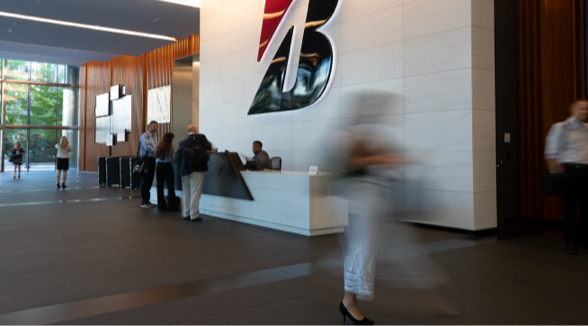SAFETY HUMP - The raised area circling the rim of the wheel and located slightly inward from the bead seat; to keep the tire from slipping into the rim well, if accidentally deflated.
SECTION HEIGHT - The distance from the bottom of the bead to the top of the tread.
SECTION WIDTH - The distance from sidewall to sidewall, exclusive of any raised lettering.
SELF-ALIGNING TORQUE - The force which causes a tire/wheel assembly to return to its straight- ahead position after a turn.
SEMI-TRAILING ARM - A rear suspension system that uses a large A-arm for each wheel; its pivot axis is set between the 0 angle of a swing axle and the 90 angle of a trailing arm to a line running straight across the car.
SERIES - This is the part of the size designation in tires, which gives the ratio of the height of a tire (from the rim to the top of the tread) to the width of the tire (from sidewall to sidewall). It is also referred to as the aspect ratio of a tire.
SERVICE DESCRIPTION (LOAD INDEX/SPEED SYMBOL) – The Service Description consists of a Load Index and a Speed Symbol. The Load Index is a numerical code that specifies the maximum load a tire can carry at the speed indicated by its Speed Symbol, at maximum inflation pressure.
SHIMMY - A rapid oscillation or wobble of a wheel and tire assembly about the steering axis.
SHOCK ABSORBER - A “damper” between the frame of the car and the suspension; used to cushion road bumps and bounces and keep the tire in contact with the road.
SHOULDER –The outer edges of a tire’s tread where it joins the sidewall.
SHOULDER GAUGE - The total thickness of a tire in the shoulder area. This is invariably the thickest part of the tire and this gauge directly affects the running temperature of a tire.
SIDEWALL - The side of a tire between the tread shoulder and the rim bead.
SIDEWALL ROLLOVER –The condition that occurs during hard cornering when a tire sidewall rubs the road surface.
SIPES - Small, narrow slots molded into the ribs of the tread design which increase the traction edges of the tire and increase the traction ability of the tire on wet pavement.
SKID RESISTANCE - Maintenance of grip on the road and resistance to slide or slip, either longitudinally or laterally.
SLIP - The change in distance traveled per tire revolution due to driving or braking conditions; expressed as a percentage of the distance traveled under a free rolling condition.
SLIP ANGLE - The difference between the direction a tire is traveling and the direction it is pointing.
SLOTS - Grooves generally positioned in the ribs and shoulder areas of some tires, which aid in wet pavement traction.
SPEED RATING (SPEED SYMBOL) – An alphabetical system describing a tire’s capability to travel at established and predetermined speeds and gauged by controlled indoor laboratory testing. An indication of the tire’s performance.
SPINDLE (OR KNUCKLE) - A device connected to a vehicle’s control arm by a ball joint; it is moved by the steering arm to change the direction of the wheels and to transmit braking torque.
SPRUNG WEIGHT - The total weight of a vehicle that is supported by the suspension system.
SQUIRM - The footprint distortion of a rolling tire.
STABILITY - The ability of tires to maintain direction of a vehicle on curves without causing excessive body sway.
STACKED BELT - A belt design in which both layers are of equal width.
STANDARD LOAD - A P-Metric tire with a maximum inflation pressure of 35, 44, or 51 psi.
STAR PATTERN - The proper method for sequential torquing of lug nuts in a 5-lug bolt circle.
STATIC - Having no motion.
STATIC BALANCE - Balance at rest. A condition in which a tire and wheel assembly has equal weight around the wheel’s axis of rotation.
STATIC LOADED RADIUS - The measurement from the middle of the axle to the road surface; measured with the tire inflated to required pressure and carrying the rated load.
STEEL BELT - A belt material used in tires. Its high stiffness provides good handling and low tread wear.
STEERING AXIS - An imaginary line drawn through the center of the steering pivots. The axis about which the wheel pivots when turned.
STEERING RESPONSE - Reaction time between driver input at the steering wheel and the directional change of the vehicle.
STEERING SYSTEM - A major control mechanism that multiplies driver input on the steering wheel into the motion of turning a vehicle’s front wheels.
SULFUR - A chemical element used in the vulcanization process.
SUSPENSION - A system of devices supporting the upper part (body and chassis) of a vehicle on its axles.
SUSPENSION PACKAGE - A specialized kit of suspension components designed specifically for individual makes and models of vehicles; usually sold to improve performance.
SWING AXLE - A rear suspension system comprised on half shafts with universal joints only at their inward ends on either side of the differential.
SWING OUT - The tendency of the rear tires of a vehicle to break away during sudden steering maneuvers.
SYNTHETIC RUBBER - Rubber made from chemicals as a substitute for natural rubber; properties can be tailored for specific needs.








